May 25, 2012
The Broken Needle
Yesterday in her article English Needles No Longer Made in England, Trish Burr brought up a subject near and dear to my heart: The Needle.
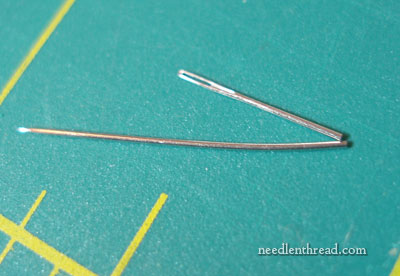
May 25, 2012
Yesterday in her article English Needles No Longer Made in England, Trish Burr brought up a subject near and dear to my heart: The Needle.

May 24, 2012
Here it is, the final article on the Medallion Project, and a little how-to bit on one way to appliqué a piece of hand embroidery to another ground fabric.

May 23, 2012
It’s been a very long while since I’ve shared any free hand embroidery patterns here on Needle ‘n Thread! This design is from a series began last year, called Lilly’s Legacy, which you can read all about in the first article of the series (which also includes a free pattern).
Today’s design was a little difficult to render as a line drawing, as the image itself is quite crowded. But I love the original painted design, with its fiery color. I hope you like it, too!
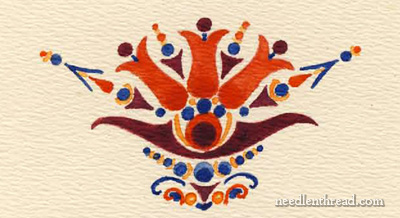
May 22, 2012
I’d like to ask each of you to descend upon my little town in Kansas and help me stitch today. I’m doing the appliqué work on the Medallion, and admittedly, I’m quaking a bit in my boots. This always happens to me when it comes time to do the Final Finish on a project. I end up hesitating, putting off, thinking through the process about a gazillion times before I actually leap.
Funny thing is, once I leap, I find out it wasn’t that big of a deal!
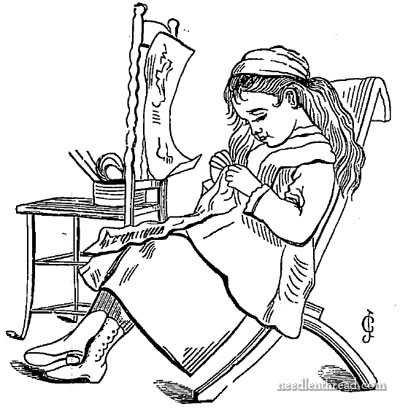
May 21, 2012
Stitch Fun is a series of articles featuring step-by-step photo tutorials that explore various hand embroidery stitches and the fun things you can do with them.
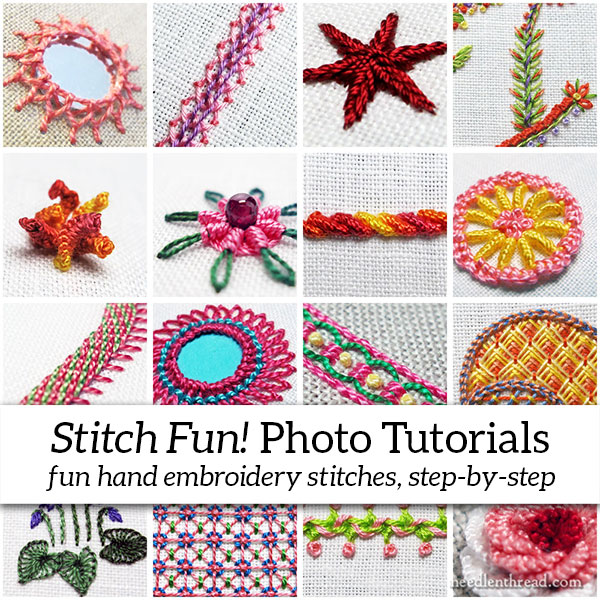
May 18, 2012
Last year, I shared with you some gorgeous needlepainted pictures in a type of embroidery called “Su Embroidery” – it is a Chinese style of embroidery from Suzhou, China, and it is amazing embroidery!
Now, thanks to Margaret Lee of Adelaide, South Australia, and Country Bumpkin you can learn Su Embroidery techniques via the handy “mechanism” of a kit.
One of the best ways to learn a technique (if you can’t attend a class) is to invest in a kit produced by a master in that technique. Find a technique that entices you, then find a designer who produces kits and books focusing on that technique, and use the kit as a learning tool. It works! If you treat the kit as a learning exercise and work your way through the designer’s steps to complete the kit, you’ll learn much about the embroidery technique. The experience may not always be roses and sunshine and perfect embroidery stitches, but you will definitely progress (and usually by leaps and bounds rather than baby steps) towards a better understanding and ability in that particular technique.
So, if Su Embroidery interests you, you might want to take a look at these complete, inclusive kits by Margaret Lee. I’ll show you one…
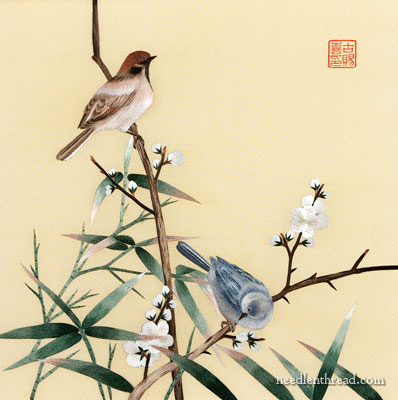
May 17, 2012
Oh dear. I seem to be on a contemplative kick – musing still over the whole cost-quality-time-value question of embroidery! If you’re in the mood to join me, do pull up a chair and pour yourself a cup of coffee. (You might need it to stay awake!)
Your comments on the blog articles from Monday and Tuesday have me thinking about a lot of things relating to embroidery and how we value our hand embroidery work. Following up on Tuesday’s discussion of the material cost involved in creating the Medallion Project, another aspect I consider when musing over the notion of Value is…
